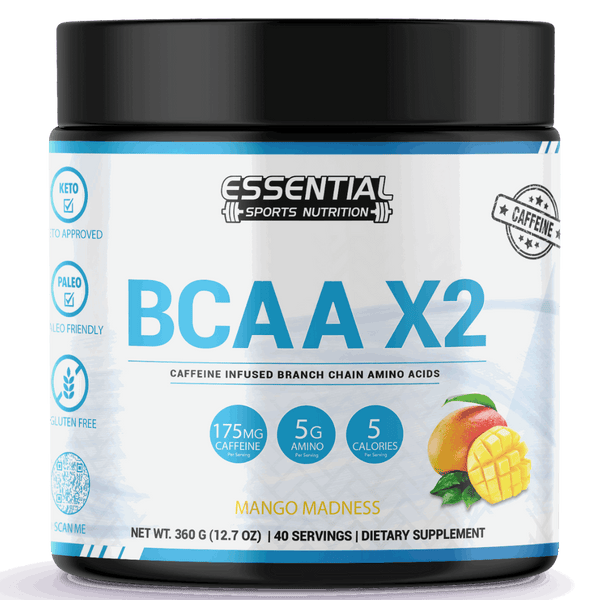Lower Back Pain Exercises for Relief and Strength
When your lower back is 'talking to you,' it's often whispering the need for attention and care. You're not alone in this; lower back pain is a common guest that overstays its welcome in the lives of many.
While rest can sometimes offer temporary relief, engaging in specific exercises may provide a more enduring solution. These exercises are designed not only to ease your discomfort but also to fortify the supporting cast of muscles that can prevent future recurrences.
As you explore the variety of movements, from gentle stretches to strengthening exercises, you'll find the keys to unlocking a more comfortable and active lifestyle.
Stick around to discover how the right exercises can put you back in control of your own well-being, and learn which movements can lead to a stronger, pain-free back.

Key Takeaways
-
Stretching exercises such as knee-to-chest stretches and pelvic tilts can provide relief and promote flexibility and strength in the lower back.
-
Strengthening exercises like bridging for core stability, cat-cow stretch technique, and core strengthening bird dogs can help alleviate lower back pain and improve posture.
-
Regular exercise can enhance coordination, improve posture, build a strong core, reduce tightness, and support everyday movements, thus preventing injuries.
-
Preventative measures such as maintaining a healthy weight, engaging in low-impact exercises, practicing good posture and ergonomic habits, avoiding prolonged sitting, and seeking personalized advice from healthcare professionals or physical therapists can help prevent lower back pain.
Understanding Lower Back Pain
To effectively manage lower back pain, it's essential to recognize that it often stems from muscle strains, habitual overuse, sudden injuries, or prolonged inactivity. These conditions can lead to chronic back pain, which affects about 80% of adults at some point in their lives.
You're not alone in this struggle, but you've got to be proactive about your lower back health.
Incorporating regular exercise, particularly activities that strengthen and stretch your lower back muscles, plays a pivotal role in both alleviating and preventing pain. Simple exercises like knee-to-chest stretches can help maintain a flat lower back position, providing significant relief. Additionally, pelvic tilts are a therapeutic exercise that targets the core and lower back, promoting flexibility and strength.
Before you start any exercise regimen, it's crucial to consult with healthcare professionals. They'll ensure that your planned activities support your back health and don't aggravate any underlying conditions. Also, remember to listen to your body and avoid movements that may worsen your pain.
With the right approach, you can manage and even overcome lower back pain. Let's make those stretches count and keep your back in check.
Stretches for Lower Back Pain
Begin your journey to a stronger lower back by lying on your back, knees bent, feet flat, and gently pulling one knee toward your chest to initiate the knee-to-chest stretch. This simple yet effective movement targets the muscles in your lower back, providing relief from discomfort. As you draw your knee closer, hold the position for several seconds, feeling a gentle stretch in your lumbar region.
Switch to the other leg, or for a more advanced variation, bring both knees to your chest. This bilateral approach can help evenly distribute the stretch across your lower back. Remember to engage your core muscles, pressing your spine into the floor to maximize the therapeutic benefits of the knee-to-chest stretches.
Consistency is key—repeat this stretch 5 to 10 times, and as your flexibility increases, so can your repetitions. Performing these stretches 2-3 times daily can significantly alleviate lower back pain. Furthermore, maintaining a flat lower back position as you hold the stretch is crucial for preventing additional strain.
Pelvic Tilt Progressions
Building on the foundation set by knee-to-chest stretches, pelvic tilt progressions further enhance your core stability and support lower back pain relief. As you move to the next step, you'll engage in pelvic tilts.
Here's how you can effectively perform this exercise:
-
Lie flat on your back with your knees bent and feet flat on the floor.
-
Tighten your abdominal muscles, aiming to flatten your back against the floor.
-
Gently rock your hips towards your ribs, creating a slight arch in your lower back.
-
Hold this position for a few seconds before returning to the starting position.
-
Repeat the movement, gradually increasing the number of repetitions as you build strength.
This progression activates your core and stabilizes the spine, providing therapeutic benefits and promoting healing.
-
Feel the tension easing as your pelvic tilt technique improves.
-
Discover a newfound flexibility in your lower back.
-
Experience the relief that comes from strengthened abdominal muscles.
-
Embrace the empowerment of taking control of your pain.
-
Celebrate each milestone in your journey to a healthier back.
Remember to always listen to your body and progress at your own pace, ensuring that each movement is performed with precision and care.
Bridging for Core Stability
As you continue your journey toward alleviating lower back pain, incorporating the bridge exercise into your routine can significantly bolster your core and gluteal muscles, fostering greater stability and support for your spine.
The bridge exercise is a foundational move that you can perform to enhance core stability. To start, lie on your back with your knees bent and feet flat on the floor, hip-width apart. Before raising your hips off the floor, tighten your abdominal and glute muscles. This activation is crucial for protecting your lower back and ensuring the effort is concentrated in your core and hips.
Carefully lift your hips to form a straight line from your knees to shoulders. It's essential that your lower back remains flat against the floor to prevent any harmful arching.
Hold the bridging position for three deep breaths. This duration encourages endurance in the muscles supporting your spine. Start with five repetitions and, as your strength builds, aim to gradually increase to 30 repetitions.
This progression won't only enhance your core stability but also provide a sturdy foundation for a pain-free lower back. Remember, consistency is key to seeing improvement in your symptoms and overall back health.
Cat-Cow Stretch Technique
Now, let's explore the cat-cow stretch, a movement that's essential for enhancing spinal flexibility and reducing lower back discomfort.
You'll want to ensure you're performing the stretch with proper form, aligning your movements with your breath for maximum therapeutic benefit.
Benefits of Cat-Cow
Delving into the Cat-Cow stretch, you'll discover that its rhythmic movement significantly enhances the flexibility and mobility of your spine and back muscles. Starting on your hands and knees, this simple yet effective exercise can transform your back's health. As you slowly arch your back, exhaling in Cat, and then let your belly drop, inhaling in Cow, you're doing more than just a stretch; you're engaging in a therapeutic ritual that brings a multitude of benefits:
-
Alleviates back pain and stiffness
-
Encourages deep, stress-relieving breaths
-
Increases back flexibility, aiding in everyday activities
-
Improves posture, promoting confidence and well-being
-
Stimulates circulation for a healthier spine
Adopting Cat-Cow into your routine is a practical, evidence-based choice for back care.
Proper Form Tips
While the Cat-Cow stretch offers remarkable benefits for your back, mastering the proper form is essential to maximize its therapeutic potential and prevent any possible strain.
Begin by ensuring proper alignment; keep your wrists directly under your shoulders and your knees under your hips.
As you transition into the cow pose, breathe deeply, arch your back downward, and hold for 5 seconds. Then, smoothly transition into the cat pose, rounding your back upward, and again hold for 5 seconds.
Keep your shoulders firmly planted to avoid unnecessary tension. Engage your abdominal muscles throughout to support your spine.
Pay close attention to your body's signals, modifying your movements if you feel any discomfort.
Return to the starting position and repeat, keeping your movements slow and controlled for the best therapeutic results.
Common Mistakes Avoided
When performing the Cat-Cow stretch, it's crucial to avoid arching your back too forcefully, as this can lead to muscle strain and undermine the exercise's healing effects. To maximize benefits while minimizing risks, keep these common mistakes in check:
-
Don't rush; synchronize your movements with your breath for a mindful experience.
-
Ensure your head transitions smoothly to avoid neck strain.
-
Avoid overarching your lower back to prevent additional discomfort.
-
Engage your core to provide essential support for your spine.
-
As you repeat the stretch, hold this position with care, and then slowly lower back to a neutral spine.
Core Strengthening Bird Dogs
When you're struggling with lower back pain, incorporating the Bird Dogs exercise can significantly improve your core strength and stability.
Mastering the technique is key, as it ensures you're engaging the right muscles and maximizing the benefits for your back health.
Be mindful of common mistakes, such as arching your back or twisting your hips, which can reduce effectiveness and even risk further injury.
Bird Dogs Technique
To alleviate lower back pain, you can engage in the Bird Dogs Technique, a core-strengthening exercise that enhances stability by simultaneously extending one arm and the opposite leg while maintaining balance on all fours.
-
Feel the relief with each stretch as you create a straight line from fingers to toes.
-
Empower your posture by engaging your abdomen and glutes, building a solid core.
-
Rejoice in the simplicity of needing no equipment, just your body and the floor.
-
Celebrate the calm as you focus on breathing and movement, reducing stress.
-
Embrace the balance that comes from keeping your knees apart and stable, finding your center.
Regular practice of this therapeutic exercise can bring you not only physical strength but also a deep sense of accomplishment and resilience.
Benefits for Back Health
Bird Dogs are a fantastic exercise to boost your core and back strength, making your spine more stable and improving your posture. This can help to ease lower back pain. By activating the muscles in your core and back, you provide better support for your spine. This is crucial because it can lead to less stress on your back, which is often where pain starts.
Check out these key benefits:
| Benefit | Description |
|---|---|
| Balance and Stability | Enhances coordination, lowering the risk of falls. |
| Spinal Alignment | Leads to improved posture. |
| Core Strength | Builds a robust core to minimize discomfort. |
| Flexibility and Movement | Helps your back move more freely, lessening tightness. |
| Overall Health | Supports everyday movements to help prevent injuries. |
Making Bird Dogs a regular part of your workout routine can make your muscles stronger and contribute to a healthier back.
Keep Your Back Happy: Include Bird Dogs in Your Routine
Bird Dogs are more than just movements; they're a way to help your back feel better. By focusing on strengthening your core, you build a natural brace for your spine. This can make a huge difference in how you feel every day. Stronger muscles mean a stronger back, and a stronger back means less pain and better movement. So, give Bird Dogs a try, and you might just find your back thanking you for it.
Common Mistakes to Avoid
While performing Bird Dogs, it's essential to avoid common errors that can reduce the exercise's effectiveness and possibly lead to injury. You're working hard to alleviate your pain, so let's make every move count.
Here's what you need to watch out for:
-
Not pulling your belly in towards your spine, which is crucial for core activation.
-
Allowing your back to arch instead of keeping your back straight and aligned.
-
Lifting your limbs too high, causing your hips to tilt rather than keeping hips level.
-
Rushing through the movements, which can compromise form and effectiveness.
-
Holding your breath, which deprives muscles of oxygen and can lead to tension.
Supine Spinal Twists
If you're experiencing lower back pain, supine spinal twists can offer a gentle way to relieve tension and improve spinal mobility. This lower back rotational exercise is simple and can be done anywhere with enough space to lie down.
Start by lying on your back with your knees bent and feet flat on the floor, hip-width apart. This position stabilizes your lower back as you prepare for the twist. Ensure your upper body is relaxed and your shoulders remain in contact with the floor throughout the exercise to prevent any strain.
Gently lower your knees to one side, aiming to get them as close to the floor as is comfortable without forcing them. You should feel a stretch along your lower back and the sides of your torso. Hold the twist for 20-30 seconds, breathing deeply and allowing your muscles to relax more with each exhale.
After holding, bring your knees back to the starting position and slowly rotate them to the opposite side. By performing 5-10 repetitions on each side, you'll aid in loosening tight muscles, promoting relaxation, and increasing flexibility in the lower back area. Remember, smooth and controlled movements are key to maximizing the therapeutic benefits of supine spinal twists.
Preventative Lifestyle Tips

To effectively prevent lower back pain, it's crucial to adopt a lifestyle that minimizes stress on your back muscles and promotes overall spinal health. Embracing habits that nurture your back can make a significant difference in your quality of life, providing a sense of empowerment and well-being.
Here are some evidence-based, therapeutic-focused lifestyle tips to help you maintain a healthy spine:
-
Maintain a healthy weight to reduce the burden on your lower back, making movement easier and less painful.
-
Engage in low-impact exercises such as walking, swimming, or biking to bolster your back and core muscles, enhancing your stability and resilience.
-
Practice good posture and ergonomic habits, ensuring that your daily activities don't exacerbate back strain.
-
Avoid long periods of sitting still; make stretching and strengthening exercises a regular part of your routine to enhance flexibility and support spinal health.
-
Consult a healthcare professional or physical therapist to get personalized advice on lifestyle modifications and exercises tailored to your needs.
Back Exercises FAQs:
Q: What are some common causes of low back pain?
A: Common causes of low back pain include muscle strains, ligament sprains, herniated discs, and degenerative disc disease.
Q: What are the best exercises for lower back pain relief?
A: Some effective exercises for lower back pain relief include pelvic tilts, cat-cow stretch, child's pose, and knees-to-chest stretch. These exercises can help alleviate tension and improve flexibility in the lower back.
Q: How can strengthening exercises help with low back pain?
A: Strengthening exercises for the lower back and core muscles can help provide stability and support to the spine, reducing the risk of future episodes of low back pain. These exercises can also improve posture and overall back health.
Q: Are there specific exercises to avoid for individuals with disc-related low back pain?
A: Individuals with disc-related low back pain should avoid exercises that involve forward bending and twisting, such as toe touches and full sit-ups. These movements can exacerbate disc-related pain and discomfort.
Q: How often should I perform stretches and exercises for low back pain?
A: It is recommended to perform stretches and strengthening exercises for low back pain at least 2-3 times per week. Consistency in performing these exercises is key to experiencing their benefits.
Q: Can exercises and stretches help alleviate chronic low back pain?
A: Yes, regular exercises and stretches tailored to address chronic low back pain can help alleviate discomfort, improve mobility, and enhance the overall strength and stability of the lower back over time.
Q: Are there specific stretches to relieve pain and prevent low back pain?
A: Yes, exercises such as the hamstring stretch, piriformis stretch, and seated lumbar flexion stretch can help relieve pain and prevent future episodes of low back pain by targeting tight muscles and improving flexibility in the lower back and hips.
Q: How can I ensure proper form while performing exercises to help my lower back?
A: To ensure proper form during exercises for the lower back, it's important to keep the back flat, engage the core muscles, and move slowly and deliberately through each exercise. Maintaining proper alignment and technique is crucial for avoiding injury.
Q: Can strengthening exercises and stretches help support the lower back?
A: Yes, strengthening exercises and stretches can help support the lower back by targeting the muscles that provide stability and support to the spine, such as the erector spinae, obliques, and gluteal muscles. This support can contribute to reduced low back pain and improved function.
Q: What are some effective exercises to help ease and prevent low back pain?
A: Incorporating exercises such as the bridge, bird dog, and plank into a regular exercise regimen can help ease existing low back pain and prevent future episodes by promoting spinal stability, core strength, and overall back health.
```
Other Frequently Asked Questions:
What Is the Best Exercise to Relieve Lower Back Pain?
Picture your spine as a sturdy tree that sometimes sways in discomfort. The best exercise to ease that sway isn't a one-size-fits-all remedy. It's about finding the right movement for your unique trunk.
Bridge exercises, for instance, can be your foundation, fortifying your back and bringing stability. They're practical, proven by science to not only lessen pain but to also nurture a stronger, more resilient core.
Start there, and you'll likely feel the difference.
How Do You Stretch a Tight Lower Back?
To stretch a tight lower back, start with gentle movements. Lie on your back and bring your knees to your chest, one at a time, to release tension. Rotate your knees gently from side to side while lying down to enhance flexibility.
Gradually work up to exercises like bridges and cat stretches. Always move within a comfortable range and don't overdo it; consistency is key to relieving tightness and improving mobility.
What Should You Not Do With Lower Back Pain?
Imagine your lower back as a delicate gear in a machine; you wouldn't want to strain it further. So, you should steer clear of standing toe touches, sit-ups, and leg lifts, as they can worsen your condition.
Also, avoid certain swimming strokes and be careful when lifting weights. Your goal is to heal, not to hinder, so focus on gentle, supportive movements that nurture your back without adding stress.
How Do You Release Pressure From Your Lower Back?
To release pressure from your lower back, you've got several options. Try the knee-to-chest stretch by pulling your knee into your chest and holding it.
Also, the lower back rotational stretch can help; lie on your back, roll your bent knees to each side, and pause.
Don't forget the bridge exercise: lift your hips while keeping your back straight.
These moves, done regularly, can ease the tension and improve your back's condition.
Back Pain is Common
In wrapping up, remember that nurturing your back can transform your well-being. Embracing these soothing movements can fortify your core and unlock the door to a more limber, joyous you.
As you regularly integrate these exercises into your routine, you're likely to feel the embrace of relief. Keep in mind, though, that a balanced lifestyle is your spine's best ally.
Here's to your journey towards a supple, resilient foundation. Stay gentle with yourself.




























